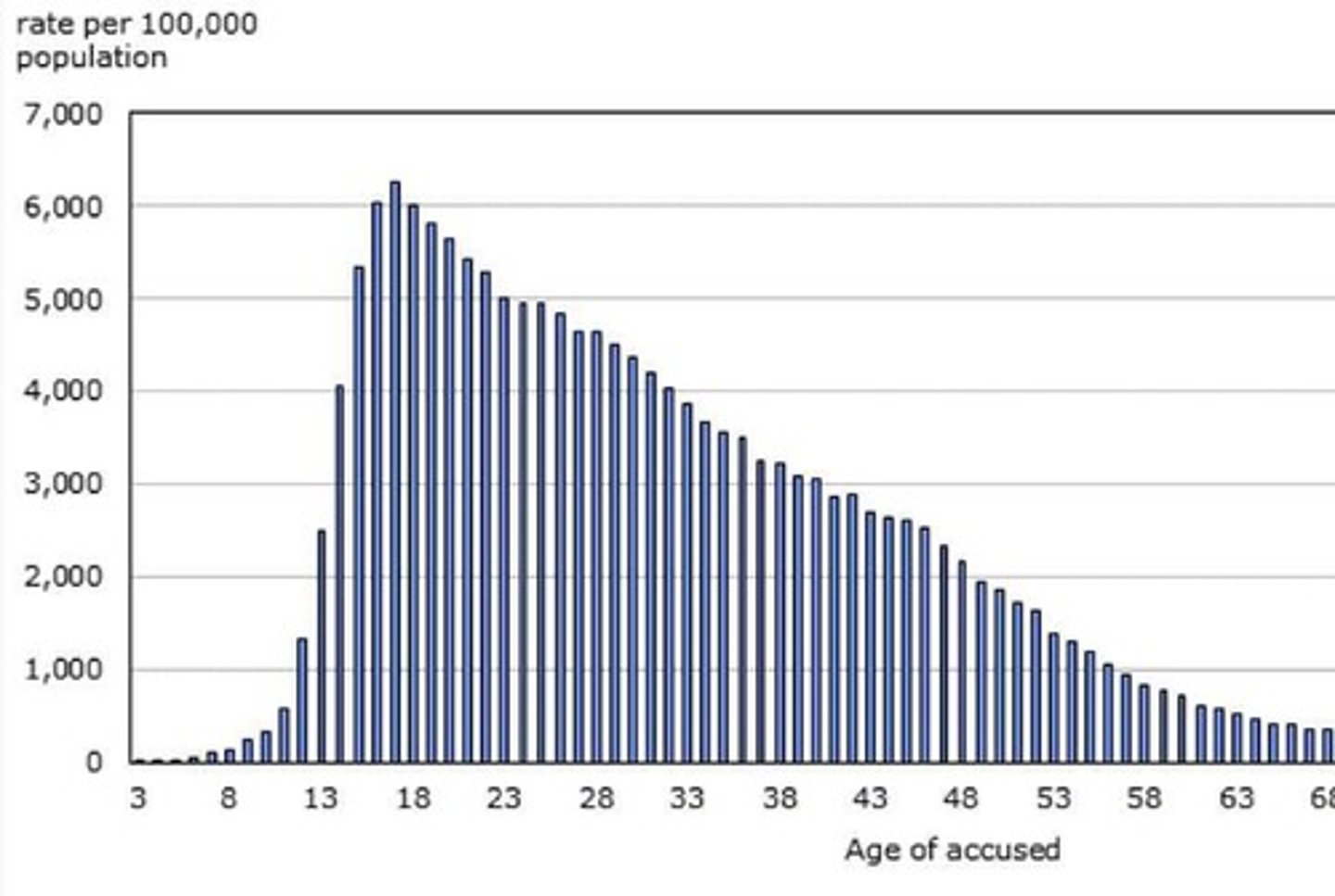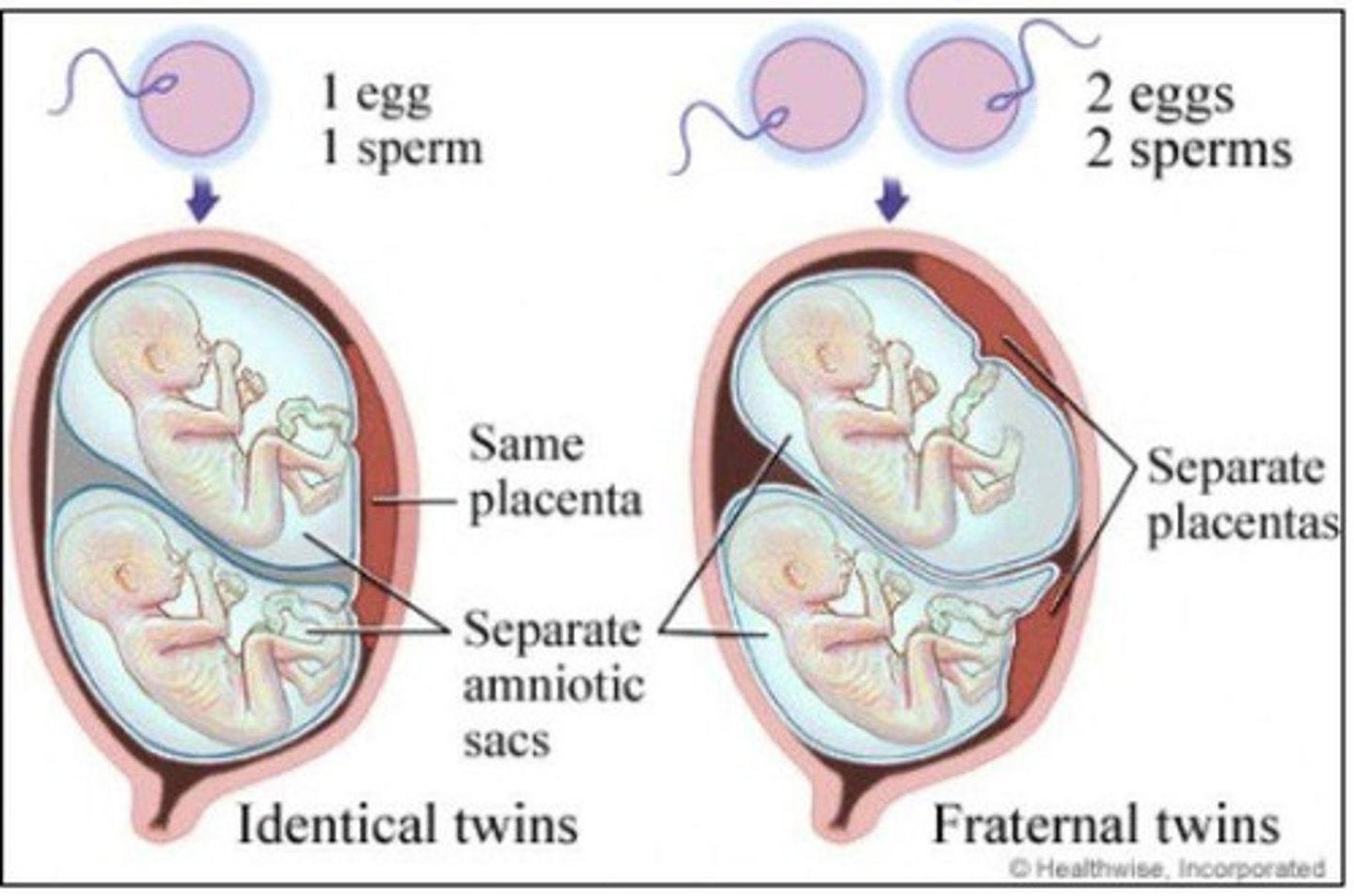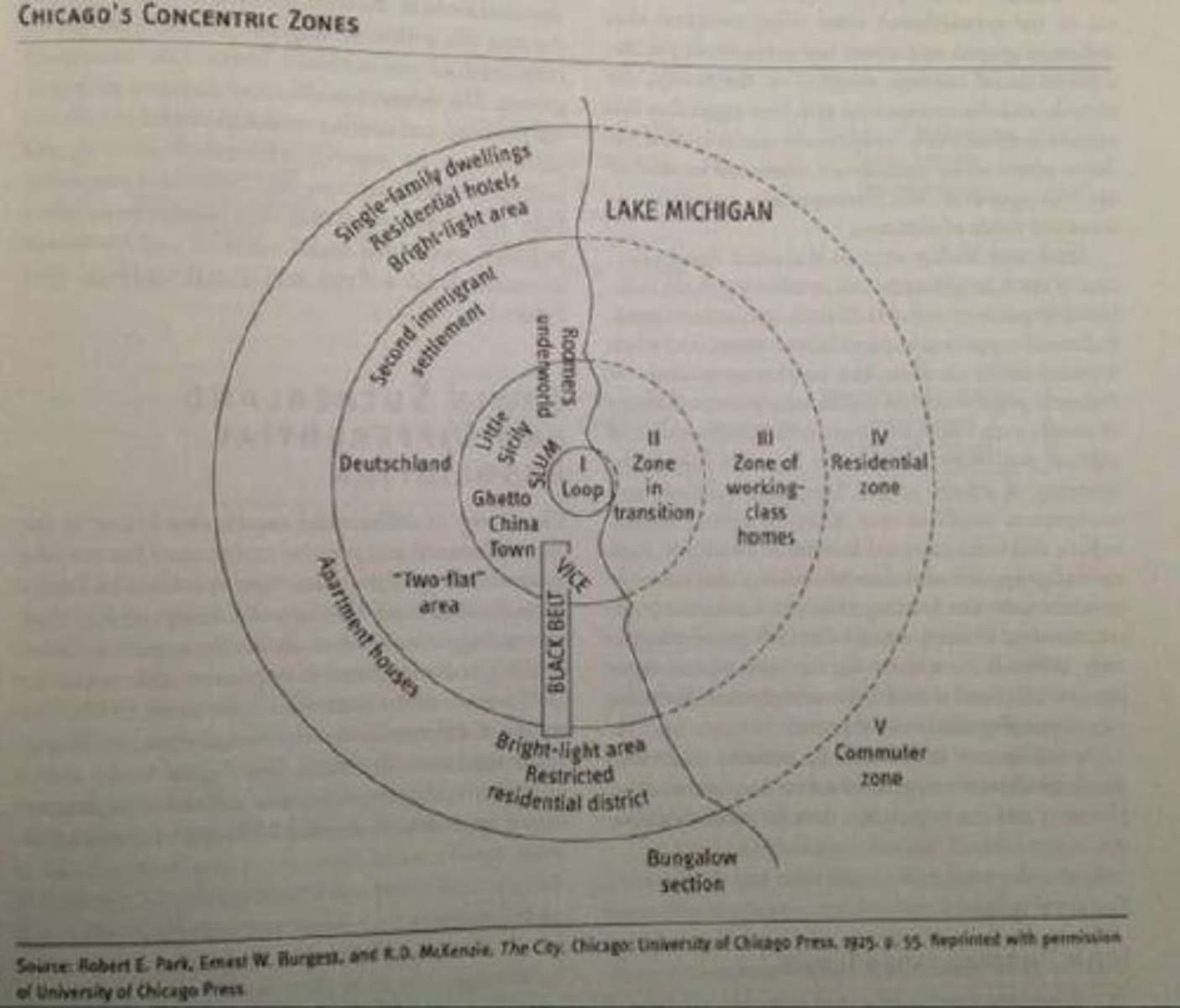Criminological Theory Midterm
1/588
There's no tags or description
Looks like no tags are added yet.
Name | Mastery | Learn | Test | Matching | Spaced |
|---|
No study sessions yet.
589 Terms
What is the definition of theory in the context of criminology?
A set of linked concepts that explain a phenomenon based on assumptions of human behavior.
What are common explanations for school shootings?
Mental illness, bullying, easy access to firearms, socialization, fame and attention, anger issues, and impulse control.
What is the difference between correlation and causation?
Correlation indicates a relationship between two variables, while causation implies that one variable directly influences the other.
What does the age-crime curve illustrate?
It shows that the rate of persons accused of crimes typically increases during late adolescence and decreases as individuals get older.

What are the three levels of analysis in criminological theories?
Micro, Meso, and Macro levels.
What is the focus of classical theories in criminology?
They emphasize rational choice and the idea that crime is a result of free will and rational decision-making.
What do positivist theories in criminology emphasize?
The use of scientific methods and legal statutes to understand crime and its prevention.
What is the consensus theory in criminology?
A theory that suggests society strives toward common goals and that laws protect the general public.
What is the conflict theory in criminology?
A theory that posits crime occurs due to power imbalances and that laws serve to protect the interests of the powerful.
What is the significance of Cesare Lombroso in criminology?
He is known as the father of modern criminology and introduced the concept of atavism, suggesting that criminals are biologically inferior.
What is the concept of 'Tabula Rasa' in criminology?
The idea that individuals are born as blank slates and that society's influence shapes their behavior.
What are the criticisms of biological theories of crime?
Methodological inadequacies, issues with defining crime, and implications of determinism versus free will.
What is the focus of twin studies in criminology?
To explore the genetic influences on criminal behavior by comparing criminal records of identical and fraternal twins.

What are the implications of genetic studies in criminology?
They suggest a potential hereditary link to criminal behavior, raising ethical concerns about human rights and determinism.
What is the role of socialization in criminal behavior?
Socialization influences individuals' behaviors and choices, impacting their likelihood of engaging in crime.
What is the significance of the term 'deviance' in criminology?
Deviance refers to behaviors that violate societal norms, which can help define what is considered 'good' or 'bad' in society.
What is the purpose of creating theories in criminology?
To explain complex phenomena like crime in the simplest way possible and guide research and policy.
What is the concept of 'Rational Choice' in crime theory?
The idea that individuals weigh the costs and benefits before deciding to commit a crime.
What are the implications of impulse control issues in criminal behavior?
Individuals with poor impulse control may be more likely to engage in criminal acts due to inability to manage their reactions.
What is the role of media influence in criminal behavior?
Media can glamorize crime, potentially encouraging individuals to seek fame through criminal acts.
What is the significance of 'fear' in maintaining law-abiding behavior?
Fear of consequences can deter individuals from committing crimes.
What is the difference between micro, meso, and macro theories?
Micro theories focus on individual behavior, meso theories examine group behavior, and macro theories analyze societal structures.
What is the concept of 'differential association' in criminology?
A theory that suggests criminal behavior is learned through interactions with others.
What is the importance of logical consistency in a theory?
A theory should make sense and be coherent in its explanations and predictions.
What is the Social Contract theory associated with Hobbes, Locke, and Rousseau?
A theory that suggests individuals consent to form a society and give up some freedoms for protection and order.
What concept did Cesare Beccaria contribute to the understanding of crime?
He argued that laws are conditions under which individuals unite to form a society, emphasizing rationality and human rights.
What is Deterrence Theory?
A rational theory of crime suggesting that fear of punishment deters people from committing crimes.
What are the three factors that deter people according to Deterrence Theory?
Celerity (speed of punishment), Certainty (likelihood of punishment), and Severity (harshness of punishment).
What is the difference between General Deterrence and Specific Deterrence?
General Deterrence aims to prevent others from committing crimes, while Specific Deterrence aims to prevent the punished individual from reoffending.
What is Routine Activities Theory?
A theory that posits crime occurs when a motivated offender, a suitable target, and a lack of capable guardians converge in time and space.
Changes in these factors can increase or decrease crime
This theory shows us that the offender is just one piece of the puzzle
We must also consider context of a criminal event to understand it and to prevent further crimes
Also includes Intimate handlers (ties to parents, community members etc, reduce involvement in crime) and Crime facilitators (physical, social, chemical)
What is Defensible Space according to Newman?
A concept suggesting that crime can be reduced in areas where residents recognize their territory and actively monitor it.
What is Rational Choice Theory?
A theory that suggests individuals make decisions based on a cost-benefit analysis, weighing the potential gains against the risks of punishment.
What are the key concepts of Crime Prevention Through Environmental Design (CPTED)?
Natural Surveillance, Natural Access Control, and Territoriality/Maintenance.
What is Target Hardening?
A crime prevention strategy that makes it more difficult to commit crimes, such as through improved security measures.
What does the Code of the Streets theory by Elijah Anderson describe?
A subcultural theory of crime that explains how certain groups develop their own norms and values that may conflict with mainstream society.
How does the concept of collective efficacy relate to crime prevention?
It refers to the ability of a community to maintain social order and prevent crime through mutual trust and cooperation among residents.
What is the significance of the term 'broken windows' in crime theory?
It refers to the idea that visible signs of disorder and neglect cause an increase in crime, suggesting that maintaining public spaces can prevent crime.
What role does fear of punishment play in Deterrence Theory?
It serves as a primary motivator for individuals to avoid committing crimes.
What is the relationship between opportunity and crime in Rational Choice Theory?
Crime is more likely to occur when opportunities for committing crimes are perceived as favorable.
What does 'bounded rationality' mean in the context of Rational Choice Theory?
It refers to the idea that individuals make decisions based on limited information and cognitive limitations.
What is the impact of social skills in the context of the Code of the Streets?
Social skills are crucial for navigating social interactions and avoiding disrespect, which can lead to violence.
What does the term 'motivated offender' refer to in Routine Activities Theory?
An individual who is willing to commit a crime, regardless of the reasons behind their motivation.
How does the concept of 'suitable target' fit into Routine Activities Theory?
It refers to individuals or objects that are perceived as valuable and vulnerable to crime.
Even without a motivated offender, an increase in the number, value or accessibility of suitable targets can result in increases in crime
Potential criminals have the opportunity to steal laptops, phones, etc that weigh little and are easy to conceal
Unless small, attractive items were carefully protected, theft rates would increase as those items become more common
Less suitable targets were less frequently stolen (fridges), harder to carry away
What is the significance of 'natural surveillance' in Crime Prevention Through Environmental Design?
It involves designing environments in a way that allows residents to observe their surroundings, deterring potential offenders.
What does 'territoriality' mean in the context of crime prevention?
It refers to the sense of ownership and responsibility residents feel towards their environment, which can deter crime.
What is the main focus of Ecological Theories in crime?
They examine external factors and micro aspects of crime, mapping official data to individuals' lives.
What does Social Disorganization Theory suggest about crime?
Crime is regulated by the nature of the neighborhood, not by the individuals within it.
What are the concentric zones in Social Disorganization Theory?
They represent different areas of a city that influence social bonds and crime rates.

What is Gentrification?
The process of renovating low-income areas, which can displace residents but may decrease crime rates.
What is the Broken Windows Theory?
It posits that signs of disorder lead to more disorder and crime; addressing minor issues can prevent larger crimes.
What is Social Capital?
Resources transmitted through social ties that facilitate social control, including obligations, information, and trust.
Define Collective Efficacy.
The ability of neighborhood residents to activate social ties to achieve collective goals, such as crime control.
What is Merton's Strain Theory?
It explains adaptations to societal strain, emphasizing the disconnect between societal goals and means.
What does Anomie refer to in Merton's theory?
A state where societal goals do not align with the means available to achieve them.
What is Agnew's General Strain Theory?
It expands on Merton's theory by examining how individuals experience strain and its effect on crime.
What is Relative Deprivation?
A theory suggesting that crime is influenced by perceived inequalities and disparities in wealth and opportunities.
What is Cohen's Status Frustration Theory?
It discusses how lower-class youths experience frustration due to the disparity between their desires and available opportunities.
What are Cloward & Ohlin's Differential Opportunities?
This theory categorizes gangs into criminal, conflict, and retreatist subcultures based on available opportunities.
What is the relationship between neighborhood disorder and crime?
Higher levels of physical and social disorder in neighborhoods are linked to increased crime rates.
What role does socialization play in crime according to Merton?
Individuals are socialized to believe in societal goals, which can lead to deviance when those goals are unattainable.
What is the significance of neighborhood watch programs?
They enhance social networks and collective efficacy, helping to reduce signs of disorder and crime.
How does gentrification impact crime rates?
It can decrease crime by improving neighborhood conditions, but often at the cost of displacing low-income residents.
What does the Broken Windows Theory suggest about policing?
Policing should focus on minor signs of disorder to prevent more serious crimes from occurring.
What is the main argument of the Social Disorganization Theory?
Neighborhood characteristics, rather than individual traits, are crucial in understanding crime rates.
What does the term 'anomie' imply in the context of crime?
It signifies a breakdown of social norms, leading to confusion and deviance in behavior.
What does the term 'status frustration' refer to?
The intense frustration experienced by lower-class youths due to the disparity between their aspirations and reality.
What is the impact of social capital on crime prevention?
Higher social capital can lead to better community engagement and lower crime rates.
How do ecological theories view the growth of cities?
They suggest that cities grow in patterned ways, influencing social bonds and crime.
What is the role of collective efficacy in neighborhoods?
It helps residents work together to maintain public order and control crime.
Criminology
The body of knowledge regarding crime as a social phenomenon. It includes the processes of making laws, breaking laws, and reacting to the breaking of laws. Its objective is the development of a body of general and verified principles and of other types of knowledge regarding this process of law, crime, and treatment.
Criminologists
Commonly applied to academics who study crime and the CJS. Take a scientific approach to studying crime. Detectives, forensic scientists, crime analysts, physicists/biochemists who specialize in studying the trajectories of bullets or DNA.
Why Should We Study Crime?
Intrinsically worthwhile to learn more about all aspects of our social lives, including criminal behaviour and societies response to that behaviour. Helps us learn more about society. US has higher rate of violent crime (specifically firearms crime) than Canada, this highlights value differences between the 2 countries. We must understand crime before we reduce it. Crime affects all of us directly or indirectly.
Crime
An unlawful action like theft.
Criminal
Someone who has been found guilty of committing a crime.
Criminal Behaviour
The actions the individual engaged in which led to the unlawful action.
Conflict vs Consensus Theories of Law
Law is not completely subjective or arbitrary.
Many criminal laws reflect serious social harms that are illegal in most societies and most people condemn.
Consensus Theorists
Laws represent the agreement of most of the people in society that certain acts should be prohibited by the criminal law.
The law reflects values shared by most members of a society (Muslim countries using Sharia law).
Consensus Theorists Examples
Most of the legal code in 1648 in US were taken from the bible (witchcraft, bestiality, adultery, rape, etc). This view is supported by the fact that there is broad agreement regarding many laws (murder, burglary, street crimes, etc).
Class Conflict Theorists
Laws are passed by members of the ruling class in order to maintain their privileged position by keeping the common people under control.
Do not believe laws reflect a consensus of members of society.
Class Conflict Theorists Example
After the Riel Rebellion, Hayter Reed (the assistant commissioner of Indian Affairs) used the Indian Act to control the indigenous population.
Hayter Reed's Actions
He deposed many of the chiefs he felt were disloyal and undermined the authority of other Indigenous leaders, instructing staff to deal with the individuals and families directly instead of through the bands.
1893 Circular Letter
In 1893 a circular letter was issued directing all police officers to refrain from ordering Indians without passes back to their reserves.
Reed's Use of Legal System
Reed was using the legal system to restrict the movement of Indigenous people who he believed were a threat to the government and white settlers.
Group Conflict Theory
A theory that attempts to explain certain types of criminal behaviour as resulting from a conflict between the interests of divergent groups.
Not all laws reflect consensus in society or involve the dominance of a class
GCT views all laws as the result of a political process, which involves a conflict or debate among different interest groups
Group Conflict Theory Characteristics
Not all laws reflect consensus in society or involve the dominance of a class. GCT views all laws as the result of a political process, which involves a conflict or debate among different interest groups.
1988 Supreme Court Decision
In 1988, the Supreme court decided laws restricting abortion were unconstitutional.
Commitment to Positions
Because the groups on different sides of this issue are so committed to their positions, it is unlikely such laws will be passed in the near future.
Dissatisfaction with Legislation
There is still dissatisfaction with the new legislation on cannabis use in Canada.
Correlates of Criminal Behaviour
Correlates: A phenomenon that accompanies another phenomenon and is related in some way to it.
Correlates of crime are variables that are connected with crime
Ex. Offenders' age, gender, socioeconomic status, ete
Correlation does not = causation
No single factor explains any crime
Correlates of crime
Variables that are connected with crime.
Correlation
Does not equal causation.
6 Correlates of Crime
Age: Young people disproportionately represented in crime generally and particularly in violent crime.
Gender
Race
Drug Misuse
Socioeconomic status
Spatial Location
Criminal activity
Intensifies in adolescence and young adulthood.
Political crime
An exception where young people may not be the primary offenders.
Corruption
An exception where young people may not be the primary offenders.
White collar crimes
An exception where young people may not be the primary offenders.
Common Youth crimes
Include nonviolent offenses such as theft under $5000, level 1 assault, uttering threats, assault level 2, robbery, cannabis possession, and mischief.
Homicide by youth
Represented less than 1% of crimes committed by youth.
Youth homicide offenders
More likely than adults to victimize strangers and commit homicides as a group rather than alone.
Peers are a critical influence
Maturational Reform
The fact that people are less likely to commit crime as they grow older.
Interwined with the life course theory (how social bonds such as attachment to a spouse, pursuit of education, onset of major life events - having kids- reduce likelihood of involvement with crime)
Beyond a certain age, things no longer sound as attractive than when you were young
The formation of various types of social bonds (work, children, marriage) means that individuals have people who depend on them to make the “right” choices
Involves a more socially responsible trajectory of human agency
Aging brings physiological limitiations